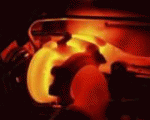- Replies 28
- Views 4.6k
- Created
- Last Reply
Top Posters In This Topic
-
 Mopar1973Man 10 posts
Mopar1973Man 10 posts -
 KATOOM 6 posts
KATOOM 6 posts -
 hex0rz 5 posts
hex0rz 5 posts -
 jokra 2 posts
jokra 2 posts
Most Popular Posts
-
Charge the batteries and then leave them disconnected and see if they hold their charge. That would help you understand if the batteries are the problem or if there's something draining them.
-
That right there will test if there is a internal short of the batteries. If there is a internal short the battery with the problem will continue to go dead without being hooked up. So charge the batt
-
My big solar system battery bank failed in the same manner. The batteries would get an internal short and the battery volts would bleed out over a 24 hour span to the point of being dead again without



I had a thread on this subject at one time but it is so old now is been archived and it won't let me resurrect it.
At the time i had some issues with the truck but they should be fixed now. I also had replaced my batteries as they were still giving me problems. It may be because of the issues i had.
So i have new batteries, but it seems like they are still getting drained. I'm thinking the recent cold sub Zero weather has something to do with it.
I was going to purchase a minder, tender but didn't know which one to get. Amperage wise i mean... i can get the Jr tender but it's .75a. So is that enough to maintain a float in two large batteries?